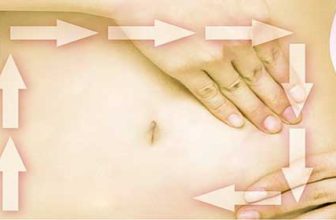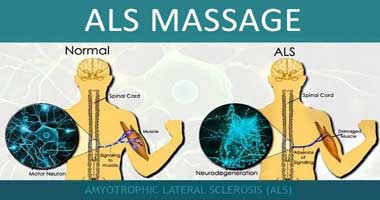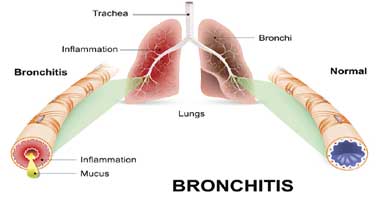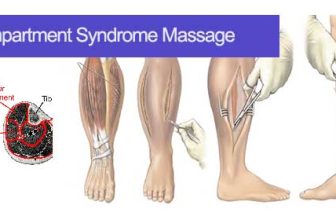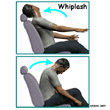
 Whiplash is an injury to the head and neck caused by sudden acceleration quickly followed by deceleration. Whiplash is also referred to as Cervical Sprain and Cervical Strain.
Whiplash is an injury to the head and neck caused by sudden acceleration quickly followed by deceleration. Whiplash is also referred to as Cervical Sprain and Cervical Strain.
Quebec Task Force Classification for Whiplash:
- GRADE 0: no whiplash. No complaints about neck, no physical signs
- GRADE 1: neck complaint of pain, stiffness and tenderness only, no physical (musculoskeletal or neurological) signs
- GRADE 2: neck complaint of pain, stiffness, tenderness. Musculoskeletal signs of decreased ROM and point tenderness. Injury to muscles, tendons, ligaments and joint capsule serious enough to cause MUSCLE SPASM
- GRADE 3. Neck complaint of pain, spasm, stiffness and tenderness. Neurological signs including decrease deep tendon reflexes, weakness, sensory defect. Injury to Nervous system is due to mechanical injury or secondary to inflammation
- GRADE 4. Neck complaint with fracture and dislocation
Other symptoms that can appear in any of the above grades:
– deafness, dizziness, dysphagia, headache, memory loss, TMJ pain, tinnitus
General Stages of Whiplash ( Does not apply to some patients)
- acute: 1-2 weeks
- early sub-acute: 3-4 weeks
- late sub-acute: 4-5 weeks
- chronic: 6+ weeks
Whiplash Massage Treatment and Goals:
Acute Whiplash Massage Therapy Treatment:
- Goal of initial treatment: decrease edema, decrease SNS ( sympathetic nervous system ) firing
- Position for client comfort, use additional pillowing if necessary
- Cool hydro to injury
- Manual Lymphatic Drainage – pumping at terminus, axilla
- Do not reduce protective muscle spasm by over-treating (especially in the SCM)
- For Grade 1 whiplash only: vibrations, effleurage, GTO release and Origin and Insertion to affected muscles
- Any other specific on site work Contraindicated
- Stroking and muscle squeezing on head, muscle of mastication and distal arms for all grades of whiplash
- Treat other areas
Early Subacute Whiplash Massage Therapy Treatment:
- Manual Lymphatic Drainage
- Trunk and shoulder girdle muscle treated to increase ROM
- Protective muscle spasm may now be reduced — Origin and Insertion and GTO release to tendons of affected muscle (SCM, scalenes, upper traps, levator scapulae, posterior cervical muscle)
- Treat Trigger Points referring to head, neck, arms
- Grade 1 only: onsite work tolerated — Thumb and Fingertip kneading
- Grade 1 & 2 only:2 Thumb and Fingertip kneading + light stroking, vibrations
- Gentle Passive Relaxed ROM to Cervical Spine: range that stretches affected muscle last
- Treat Muscles of the: head, mastication, arm
- Treat other injuries ( TMJ disorder)
Late Subacute Whiplash Massage Therapy Treatment:
- Hydro can be contrast, if inflammation still apparent, use cold
- Decrease Hypertonicity in the Upper Back and Rotator Cuff Muscles
- Treat trigger points in muscle referring to head and neck
- Head and Neck Treatment
- Upper trapezius, levator scapula, splenius capitis and cervicis, subocciptals
- Scalenes and SCM thoroughly treated for Trigger Points
- Treat Trigger Points in Infrahyoids, Suprahyoids, Longus Colli
- Swedish Techniques to Pectoralis muscles, Intercostals, Diaphragm
- Joint play to cervical and thoracic vertebrae
- Treat other conditions (TMJD, TOS)
Chronic Whiplash Massage Therapy Treatment:
- Similar treatment to late sub acute, more work possible
- Focus on decreasing remaing adhesions with MFR, muscle stripping, cross fiber frictions to adhesions followed with stretch
- All affected muscles are treated completely
- Joint play to cervical and thoracic spine and shoulder
- Passive Relaxed ROM, Cervical Spine traction
Considerations and Contraindications for Whiplash Massage:
- For Acute Injury, and for Grades 2 and above: No testing past Active Free ROM and neurological tests (deep tendon reflexes, sensory, motor)
- Acute Stage: Do not remove and do not passively stretch protective muscle spasm
- For Grade 4 whiplash: (fracture, dislocation, extreme unexplained muscle weakness, dysphagia due to hematoma) refer client to Medical Doctor
- Subacute and Chronic: Perform Vertebral Artery Test if possible: is positive, refer client to a physician
- avoid extreme stretches to cervical muscle in acute and sub acute stages
- do not mobilize hypermobile vertebrae (C4-C6)
- joint play should not be painful
- avoid overly aggressive techniques even in sub acute and chronic stages. May lead to a flare-up of acute symptoms
- do not compress carotid artery when working on the anterior neck
- do not massage both SCM simultaneously
- no cross fiber frictions with anti-inflammatories
Signs and Symptoms of Whiplash:
Acute Whiplash Signs and Symptoms:
- Usually no pain or decrease ROM immediately following injury … develops gradually over 24 hours
- Heat, edema, spasm develop after 24 hours
- With grade 2 or higher: spasm, strain, contusion
- With grade 3 or higher: cervical ligament sprain, facet joint irritation
- With grade 3 or 4 whiplash: rupture of anterior and posterior longitudinal ligament, vertebral fracture/dislocation
- Blunt head trauma, loss of consciousness, headache
- Apprehension to passive or active movement of the cervical spine
- Direction of impact influences
- hyperflexion – posterior neck strain/sprain
- hyperextension – anterior neck strain/sprain
- head rotated – facet joint irritation
- laterally flexed – nerve root and brachial plexus stretch lesions can occur (burning pain, numbness in arm, weakness in shoulder muscles)
- Muscle guarding and spasm often in SCM and multifidi in the cervical spine
- Point tenderness at injury site
- Palpable gap in muscle if hematoma present
- Deafness, dizziness, dysphagia, headache, memory loss, nausea, TMJ pain, TOS, tinnitus, muscle atrophy and loss of strength (with peripheral nerve involvement)
Early Subacute Whiplash Signs and Symptoms:
- Edema, heat, inflammation still present but reduced
- Pain in affected muscle diminished
- Adhesions developing around injury site
- Protective muscle spasm diminishing, Trigger points develop
- Decreased ROM
- Slow healing to hypovascular ligaments
- Numbness in arms with nerve tractioning or TOS
Late Subacute Whiplash Signs and Symptoms:
- Pain, edema, inflammation diminishing further
- Original sharp muscle pain is now achy, refers to head, arm, or between scapulae
- Affected muscles become progressively less tender
- ROM improving but still decreased
- Protective muscle spasm gone, replaced by increased muscle tone in affected, synergists and antagonists. TP in affected muscle and compensating muscle
- Adhesions are maturing
- If hematoma, diminishing but gap still palpable
Chronic Whiplash Signs and Symptoms:
- Pain is deep, aching, vague. May refer to head, arms, between scapulae
- Headache which worsens with activity
- Cervical spine muscle shortened and fibrosed
- Longus colli in chronic spasm – over time, this will decrease the cervical spine lordosis leading to unstable vertebrae and compressed discs
- Multifidi in chronic spasm to attempt to stabilize vertebrae
- TMJ dysfunction. hypertonic muscles of mastication
- Hypertonicity and trigger points in affected muscles
- Adhesions matured around injury
- Tissue cool due to ischemia
- Full ROM decreased especially in upper cervical spine
- Possible hypermobility of C4-C6 due to instability
- Decreased strength of affected muscle; disuse atrophy
- Over time, patient may develop Degenerative Disc Disease and Osteoarthritis of the Cervical Spine
Self care for Whiplash:
- Hydro:
- acute: cool
- early or late sub acute :cool or contrast
- Chronic: heat
- self massage
- perform Cervical ROM ( flex, extend, sidebend) (injured range last). To onset of pain only
- late sub acute or chronic: isometric strengthening of affected muscle
- strengthen rhomboids and mid-traps
- tell client most cases resolve in 4-6 weeks, be as active as possible without pain
